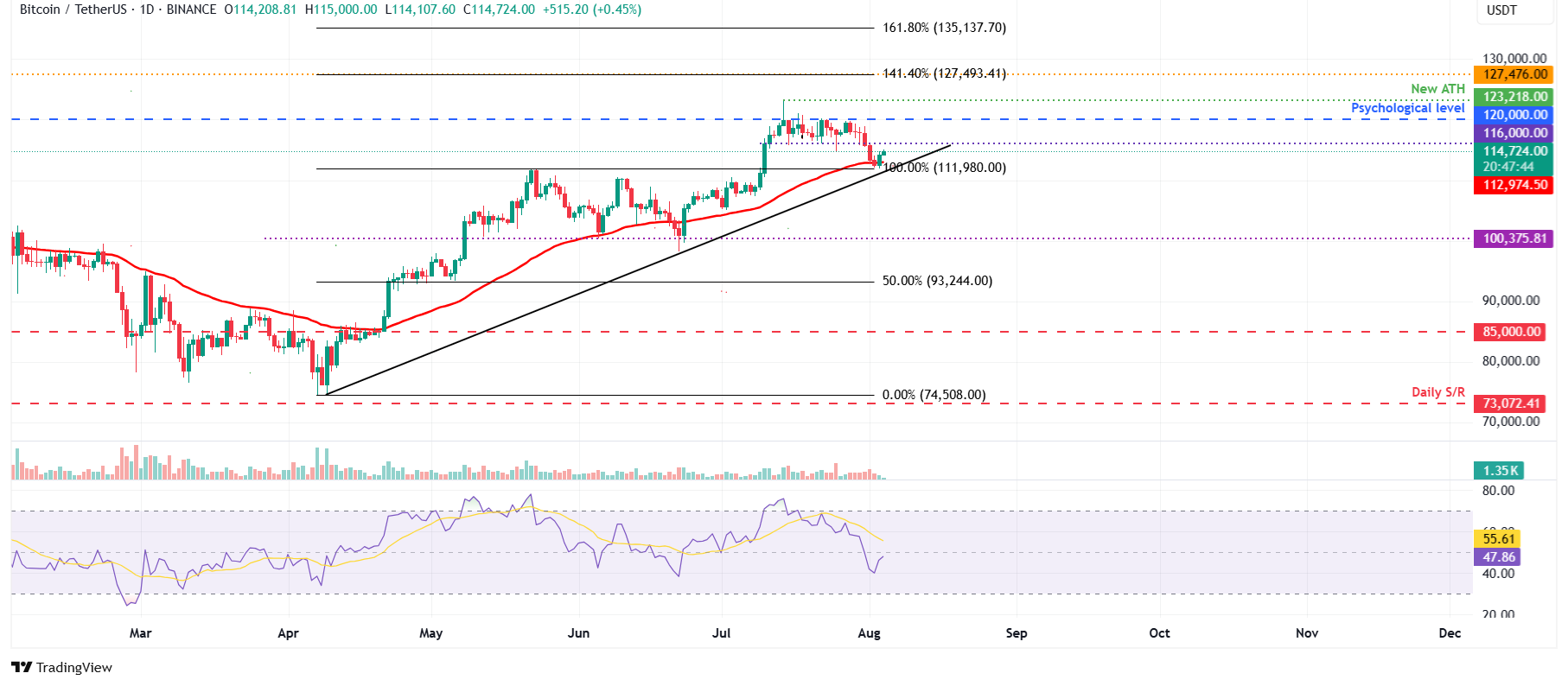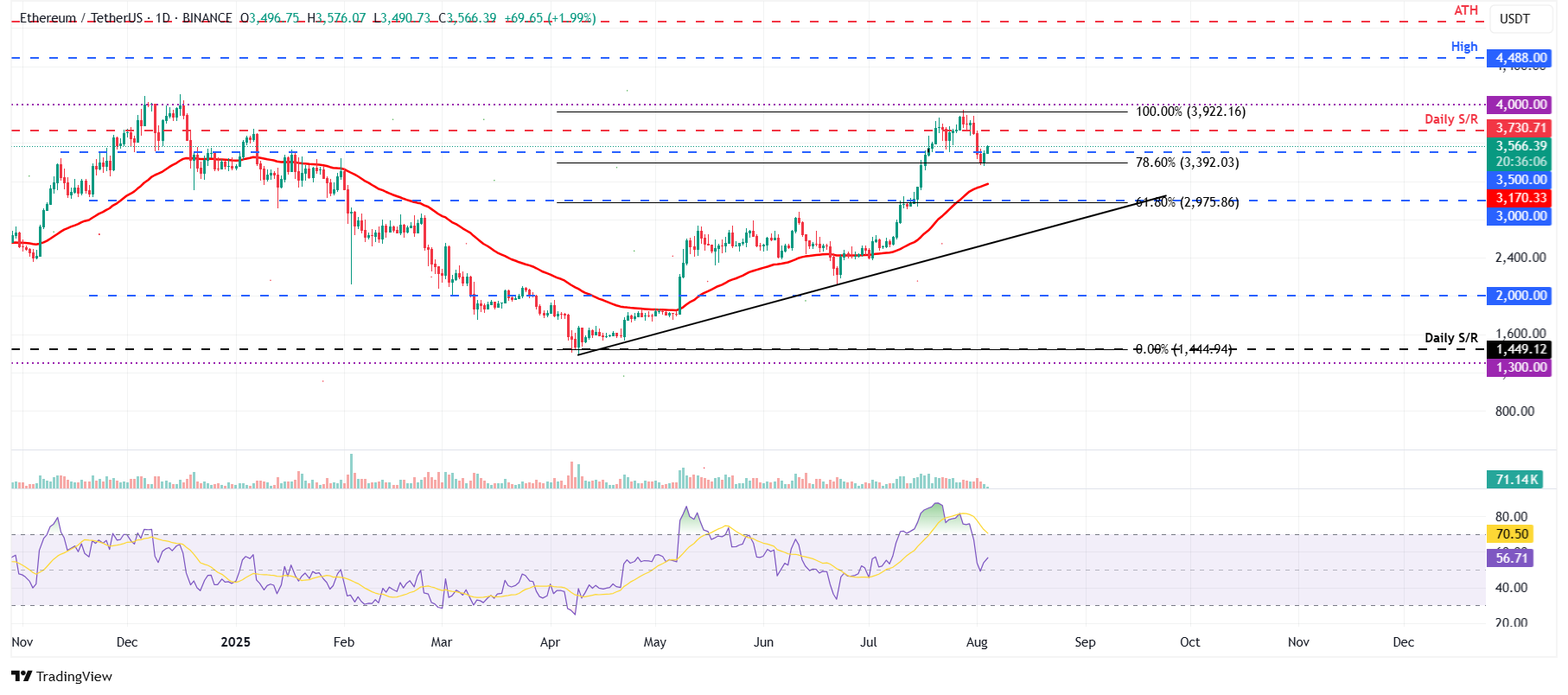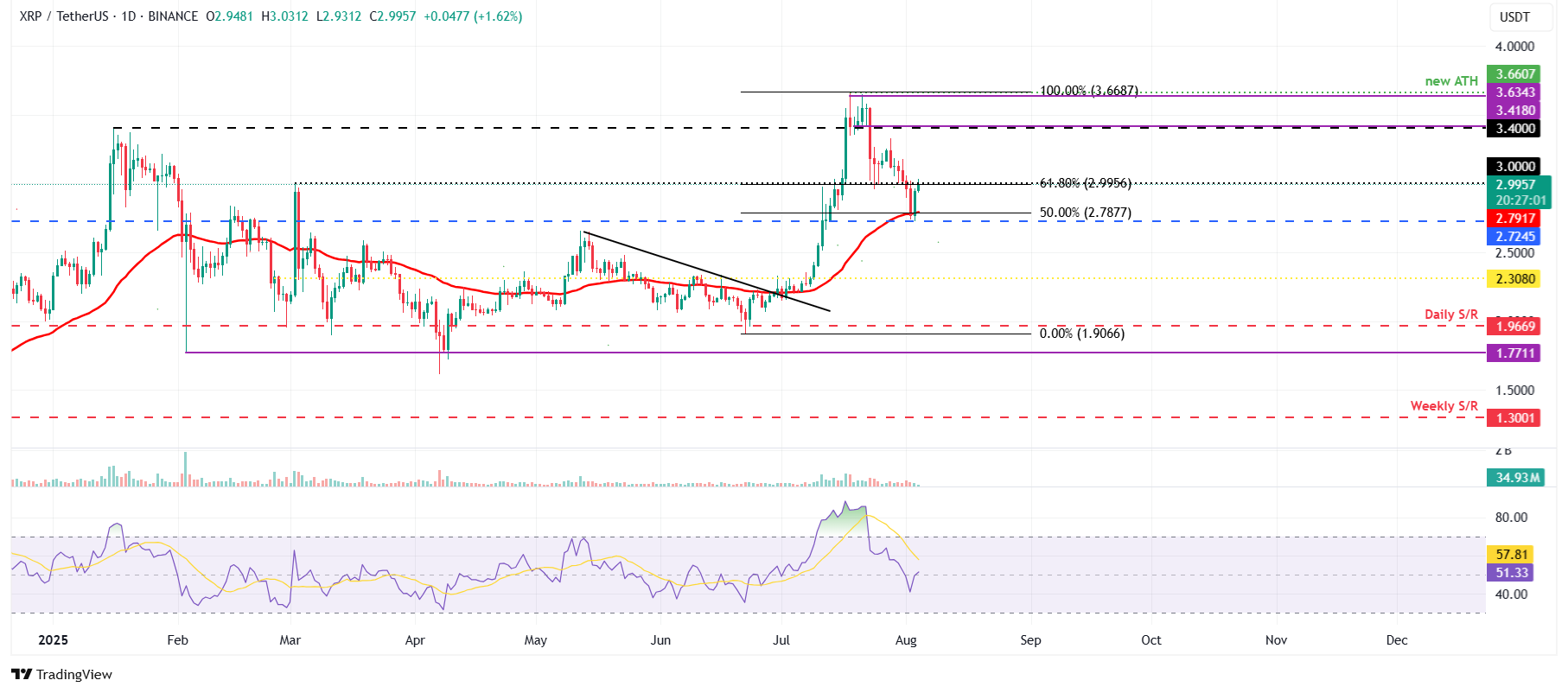Top 3 Price Prediction: Bitcoin, Ethereum, Ripple – BTC, ETH, XRP stage recovery after recent declines
- Bitcoin price recovers, trading above $114,500 on Monday after finding support around its 50-day EMA support zone.
- Ethereum price steadies near $3,500 after falling nearly 10% in the previous week.
- Ripple’s XRP holds firm above the $2.72 support level, suggesting a potential rebound in the near term.
Bitcoin (BTC), Ethereum (ETH), and Ripple (XRP) have recovered slightly and are now steady at around $114,000, $3,500, and $3, respectively, as of Monday's writing. These top three cryptocurrencies by market capitalization had corrections of nearly 5%, 10%, and 9% in the previous week, with the broader market sentiment remaining mixed. Technical indicators hint at possible short-term relief rallies if current supports hold.
Bitcoin finds support around its 50-day EMA
Bitcoin price broke below its lower consolidation level at $116,000 on Thursday and declined nearly 3% in the next two days, retesting its 50-day Exponential Moving Average at around $112,974. This 50-day EMA roughly coincides with the previous all-time high of $111,980, making it a key support zone. BTC recovered 1.48% after retesting this support zone on Sunday. At the time of writing on Monday, it continues its recovery, trading above $114,500.
If this support zone continues to hold, BTC could extend the recovery towards its previously broken lower consolidation level at $116,000.
The Relative Strength Index (RSI) on the daily chart reads 47 and points upward toward its neutral level of 50, indicating fading bullish momentum. For the recovery rally, the RSI must move above its neutral level.

BTC/USDT daily chart
However, if BTC faces a correction, it could extend the decline toward its key support level at $112,975, its 50-day EMA.
Ethereum recovers after a sharp fall
Ethereum price closed below its daily support level of $3,730 on Thursday and declined 8.23% in the next two days, closing below its next support at $3,500. On Sunday, XRP recovered slightly after finding support around its 78.6% Fibonacci retracement level at $3,392. At the time of writing on Monday, it continues its recovery, trading above $3,500.
If ETH continues its recovery, it could extend the rally toward its previously broken support level at $3,730.
The RSI on the daily chart reads 56 after bouncing off the neutral level of 50 on Saturday and points upwards, indicating bullish momentum gaining traction.

ETH/USDT daily chart
On the other hand, if ETH faces a correction, it could extend the decline toward its next key support at $3,170, the 50-day EMA.
XRP rebounds after resting on its key support zones
XRP price closed below its 61.8% Fibonacci retracement level at $2.99 on Friday and declined 6.48% the next day, testing its daily level at $2.72. This daily level at $2.72 roughly coincides with the 50% Fibonacci level at $2.78 and the 50-day EMA at $2.79, making this a key support zone. XRP recovered 6.45% on Sunday after rebounding from this key support zone. At the time of writing on Monday, it continues to trade higher at around $2.95.
If XRP continues to recover and closes above the $2.99 resistance level, it could extend the rally toward its next daily resistance at $3.40.
The RSI of the daily chart is slipping above its neutral level of 50, indicating fading bearish momentum. For the recovery rally to be sustained, the RSI must maintain its level of 50.

XRP/USDT daily chart
Conversely, if XRP faces a correction, it could extend the decline toward its daily support level at $2.72.
Cryptocurrency metrics FAQs
The developer or creator of each cryptocurrency decides on the total number of tokens that can be minted or issued. Only a certain number of these assets can be minted by mining, staking or other mechanisms. This is defined by the algorithm of the underlying blockchain technology. On the other hand, circulating supply can also be decreased via actions such as burning tokens, or mistakenly sending assets to addresses of other incompatible blockchains.
Market capitalization is the result of multiplying the circulating supply of a certain asset by the asset’s current market value.
Trading volume refers to the total number of tokens for a specific asset that has been transacted or exchanged between buyers and sellers within set trading hours, for example, 24 hours. It is used to gauge market sentiment, this metric combines all volumes on centralized exchanges and decentralized exchanges. Increasing trading volume often denotes the demand for a certain asset as more people are buying and selling the cryptocurrency.
Funding rates are a concept designed to encourage traders to take positions and ensure perpetual contract prices match spot markets. It defines a mechanism by exchanges to ensure that future prices and index prices periodic payments regularly converge. When the funding rate is positive, the price of the perpetual contract is higher than the mark price. This means traders who are bullish and have opened long positions pay traders who are in short positions. On the other hand, a negative funding rate means perpetual prices are below the mark price, and hence traders with short positions pay traders who have opened long positions.



